Results 2,281 to 2,290 of 12091
Thread: Anandtech News
-
10-02-12, 02:00 PM #2281
Anandtech: Testing AMD’s HD 7970M Enduro Hotfix
I just posted the full review of the Clevo P170EM from AVADirect, but there’s a ton of content specific to the Clevo notebook and I know many of you are waiting to hear more about AMD’s Enduro 5.5 driver updates. Let me start by pointing back to our overview of AMD’s Enduro technology. I had some back and forth discussions with AMD, and that took long enough that the public Enduro 5.5 update is now available. As I noted in the beginning of the first Enduro article, my initial impressions weren’t particularly good to say the least, and my first encounter with the P170EM didn’t assuage my concerns. Thankfully, AMD has been working to improve/fix the technology, and the public Enduro 5.5 driver at least installs and updates the UI for Enduro, with the promise of future driver releases.
There were many comments on the Enduro article, and in general most of those comments weren’t particularly favorable towards AMD or the HD 7970M, but my experience suggests that (nearly?) all of the problems can be fixed with driver updates. One complaint in particular is with GPU underutilization—that the 7970M in some games is only running at 50-70% utilization, and thus delivers lower than expected frame rates. The public 12.9 Beta drivers still have this problem in many games, but AMD knows this and is working to fix things. Let me first describe what’s happening before getting to the fix.
When you max out the details in most games the 7970M will still get above 30FPS, which is good. Unfortunately, in some titles the GPU utilization will drop well below 90% (around 60% in some games) and this results in a very perceptible drop in performance. So for example, a game like Battlefield 3 might go from a smooth 40+ FPS down to 20FPS for a second or two, then back to 40+ FPS—lather, rinse, and repeat. As you can imagine, that makes serious multiplayer gaming a real problem, and at lower detail settings (with higher frame rates), the GPU utilization is even worse (sometimes even lower than 50%). Going through our current gaming test suite with the public drivers, in some of our test titles we only get slightly improved frame rates despite dramatically lower complexity. Owners of 7970M notebooks have expressed a great deal of frustration with AMD over the situation, and the lack of driver updates has only heightened the irritation.
Thankfully, AMD is set to address the driver updates issue with their new Enduro Catalyst program. What’s more, AMD is aware of the GPU underutilization problem and they’re working to address that as well. The initial 12.9 Beta driver still has underutilization problems, but AMD plans to release a Hotfix in the next week or so that should hopefully clear things up. Whatever the root cause (possibly the problem is related to the copying of frames over the PCIe bus, as the problem becomes more pronounced in games that hit higher frame rates), AMD says the issue can be fixed with drivers. To prove this, AMD gave us advanced access to the Hotfix drivers, and we’ve run them with our current test suite. You can see the full performance breakdown in the Clevo P170EM review, where we look at performance with three sets of drivers to show how things have/haven’t changed since the 7970M launch, but we wanted to provide a short summary outside of the notebook review.
The above table compares the Hotfix performance to the best result from the previous two drivers (e.g. the initial Clevo P170EM driver from May and the Catalyst 12.9 Beta from last week). The 12.9 Beta actually tends to be the lowest performing driver out of the three we tested in most games, but it’s usually relatively close to the original driver. The Hotfix on the other hand only shows one drop in performance: Batman at Enthusiast settings is down from the Beta, which in turn is down quite a bit from the original driver. Everywhere else, the Hotfix is at least equal to the better of the previous two drivers, and in many cases it’s significantly faster. It’s especially potent at lower quality/resolution settings, where we see an average increase of around 30% at our Value and Mainstream settings. At maximum quality for our six titles (since Shogun 2 won’t allow the Very High preset), the average increase is only 7%, but if we eliminate Batman it’s a 13% increase. That still doesn’t really tell the whole story, however, as performance was actually good in many titles but needed help in a few others.
If we take a closer look, Battlefield 3, Civilization V, DiRT 3, and Shogun 2 all show >40% improvements at our Value preset, and the same set minus BF3 sees big gains at our Mainstream preset. At our Enthusiast settings, however, only Civilization V sees a major increase in performance. That sort of performance jump is huge—GTX 680M for instance is only around 50% faster than the previous generation GTX 580M on average—but of course we’re really talking about HD 7970M performing poorly at launch and getting fixed (and I believe most of this is specific to Enduro enabled 7970M notebooks like the Clevo P150EM and P170EM).
All of this goes back at least in part to the GPU underutilization issues seen with earlier drivers, where higher quality settings/resolutions are more likely to stress the GPU. We did check GPU utilization with the Hotfix on all of the tested titles, and there are still games where we see sub-80% GPU use (particularly at lower details/resolutions), but I’m not sure that’s particularly important when we’ve got competitive frame rates. Note also that as far as I’m aware, the GPU underutilization issue is confined mostly or perhaps even solely to the HD 7970M/7950M—the lesser GPUs like 7870M and 7770M should not experience this as much, largely because they’re not as fast and it will be easier to reach GPU bottlenecks as opposed to CPU limits.
We’re not done with the AMD Enduro driver story, of course. With this release, AMD is starting on the road to delivering reference drivers that will in theory work with all Enduro (PowerXpress 4.0 or later) laptops. In practice, there are still some teething problems, and long-term AMD needs to get all the kinks straightened out. They’re aware of issues with other Enduro laptops and the 12.9 Beta drivers (they’re beta for a reason, right?), and hopefully the next major release after the Hotfix will take care of the laptop compatibility aspect. I’ve stated before that AMD’s Enduro feels like it’s where NVIDIA was with Optimus about two years (2.5 years) back, and that continues to be the case. The first public Enduro beta driver is a good place to start, and now AMD just needs to repeat and refine the process a few more times. Hopefully by the end of the year we’ll see a couple more driver updates and compatibility will improve.
We’re also working to get the Alienware M17x R4 with HD 7970M, which will allow us to specifically see how much performance is affected when we enable/disable Enduro support. AMD’s target should be less than a 5% drop (basically similar to what NVIDIA achieves with Optimus), so if/when we can test a discrete-only 7970M implementation we will provide further details. In the meantime, if you simply must have an HD 7970M notebook, Alienware’s inclusion of software controlled muxes to allow the disabling of Enduro makes that the safest bet.

More...
-
10-02-12, 08:30 PM #2282
Anandtech: LG Google TV Review
I’m really not sure how it happened. Despite our coverage of so many different streaming boxes over the years, we somehow never reviewed Logitech's Revue, their entrant into the Google TV space. We took a long hard look at a Sony BluRay/Google TV combo; but despite having had our hands on just about every piece of tech running Google TV that remains, until now, our only review. Perhaps, and this is serious, the other editors that had handled the gear felt just how unfinished the product really was; and knew it would be a labor of love to slog through it. Wish they’d tipped me off. We’re expecting big things from Google with regards to Google TV in the next few months, certainly by CES. So, we figured, before we see what’s next, let’s look at what’s best. And so, we have the LG Google TV. Let's take a look.
 

More...
-
10-03-12, 07:00 PM #2283
Anandtech: The New Razer Blade: Thoroughly Reviewed
Earlier this year, Razer handed me a Blade evaluation unit and told me to go wild. Considering the company had no previous experience with developing PC laptop hardware, I was skeptical about their ability to transition from a manufacturer of gaming peripherals to a manufacturer of gaming systems. Turns out, my concerns were unfounded, as the Blade turned out to be a well-designed, high quality notebook. Granted, the dual-core Core i7 and NVIDIA GT 555M graphics chip were more suited for a high-end 14” system rather than a fully fledged 17” gaming notebook, while the $2799 asking price bordered on obscene, but the Blade was a polished piece of engineering that showed that Razer was capable of producing premium grade hardware.
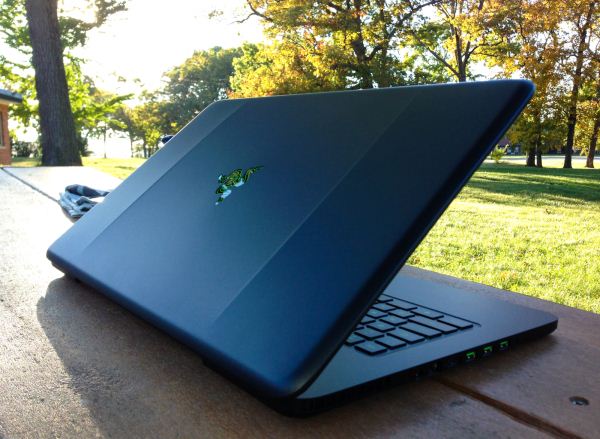
Fast forward eight months and Razer dropped off the new Blade at my doorstep. (They’re a pretty trusting bunch.) The new Blade looks quite similar to the old Blade, but there are some key differences under the hood. Most obvious is the significant upgrade in computing prowess, with the CPU/GPU combination being kicked up to a quad-core Ivy Bridge chip and NVIDIA’s GTX 660M graphics, but there's also a redesigned cooling system and a much more stable software backend to the Switchblade LCD trackpad. It’s also gotten a price drop to $2499. Do the improvements make the Blade more competitive with the gaming notebook establishment? Read on to find out.

More...
-
10-03-12, 11:30 PM #2284
Anandtech: Dell U2713HM - Unbeatable performance out of the box
When you look at the 27” panels on the market today, they virtually all use a panel from LG. Samsung has their own PLS panels, but otherwise almost everyone with a 2560x1440 panel is using one from LG, with either LED or CCFL backlighting. When the main component of any screen is the same as every competitor, it can be harder to differentiate yourself from the pack. We see NEC offer flexibility, uniformity and control beyond the other vendors, though at a price. Nixeus offers us a panel with the features and build taken down to a level that lets it beat everyone on price.
Dell seems to almost always focus on trying to find the sweet spot for value and features in their display line. They don’t make panels to compete with NEC, but they generally aren’t trying to compete with comapnies like Nixeus. The Dell U2713HM is their newest 27” panel, though it doesn’t replace the U2711. That model still has a larger AdobeRGB color gamut as well as more inputs and features in comparison to the U2713HM, and it maintains a higher retail price. So what does the Dell U2713HM offer, and where does it fit into the world of 27” displays?

More...
-
10-04-12, 10:00 AM #2285
Anandtech: Home Automation and the 'Internet of Things'
Home automation (hereafter referred to as HA) refers to the mechanization and automatic control of various residential activities. It typically provides for centralized control of electrical appliances (such as air conditioners, lighting and security systems and even the home theater). In addition to the comfort and convenience factor, energy efficiency also receives a boost.
The integration of various electrical devices in the household has been a challenge because of the absence of a cheap, open and standardized communication protocol between them. Due to this reason, HA systems have typically come with a hefty price tag and needed a professional CI (custom installer / integrator) to set up.
Image Credit: Home Automation MontrealThe 'Internet of Things' has been a buzzword for an increasingly networked world where everything from the refrigerator to the lamp in the household would end up with an IP address. While this hasn't  become a reality yet, we are slowly, but surely, moving towards this vision. Read on for our take on why we believe Wi-Fi is placed well towards becoming the next HA standard

More...
-
10-04-12, 03:00 PM #2286
Anandtech: Razer's Project Fiona Gaming Tablet Confirmed for Production

Razer garnered a lot of press at CES this year with their Fiona gaming tablet, a 10.1" Windows-based tablet packing a Core i7 processor and two joystick handles featuring dual analog sticks and a typical controller-style button layout. The device carried a pretty impressive speclist and walked out of Las Vegas with awards like "Best of CES" People's Voice and Cnet's Best-in-Show. At the time, Razer claimed that Project Fiona was slated for launch in the second half of 2012, but has remained mostly quiet in the months following. 
A day after CEO Min-Liang Tan posted a picture of Project Fiona to his Facebook page asking for 10,000 likes in 7 days, the post crossed the mark. While it looks like the 2012 launch is unlikely, Min has confirmed via Twitter that production plans for the tablet are a go, with community feedback apparently set to play a significant role in the design process going forward. According to Min's Facebook page, there are are multiple design concepts that have been developed, so there is no final design specification as of yet. Hardware details have not yet been set in stone, with ARM and various Intel processors being mentioned as possibilities. Windows 8 is a given, though if ARM ends up being the hardware platform of choice, that would likely shift to Windows RT. The initial concept shown off at CES featured Windows 7, a ULV Core i7 processor, an unspecified dedicated graphics unit, and a 10.1" 1280x800 capacitive multitouch display.
Source: Twitter @minliangtan

More...
-
10-05-12, 02:00 AM #2287
Anandtech: Intel's Haswell Architecture Analyzed: Building a New PC and a New Intel
Atom was originally developed not to deal with ARM but to usher in a new type of ultra mobile device. That obviously didn't happen. UMPCs failed, netbooks were a temporary distraction (albeit profitable for Intel) and a new generation of smartphones and tablets became the new face of mobile computing. While Atom will continue to play in the ultra mobile space, Haswell marks the beginning of something new. Rather than send its second string player into battle, Intel is starting to prep its star for ultra mobile work.
Haswell is so much more than just another new microprocessor architecture from Intel. For years Intel has enjoyed a wonderful position in the market. With its long term viability threatened, Haswell is the first step of a long term solution to the ARM problem. While Atom was the first "fast-enough" x86 micro-architecture from Intel, Haswell takes a different approach to the problem. Rather than working from the bottom up, Haswell is Intel's attempt to take its best micro-architecture and drive power as low as possible.
Read on for our full analysis of both Haswell as a microprocessor architecture and as a ultra mobile platform.

More...
-
10-05-12, 11:30 AM #2288
Anandtech: AMD Cuts Radeon HD 7850 Prices Again
AMD’s initial launch prices for the Radeon HD 7000 series were not well received by the thrifty. But as AMD has since discovered, starting high means you can make a big deal of price cuts, and that’s exactly what they’ve been doing for roughly the past 6 months. Through a few different rounds of publically announced price cuts on the 7900, 7800, and 7700 series, AMD has not only improved their competitive positioning versus NVIDIA and their old products alike, but has also quickly won favor with a budget-conscientious public.
It should come as no surprise then that AMD is continuing this campaign of public price cuts this fall with yet another round of price cuts. As part of AMD‘s preparations for future events AMD’s cheaper 7800 series card, the Radeon HD 7850, is receiving an all-but-official price cut to shore up the card’s competitive positioning.
For this latest round of cuts AMD is reducing prices on the 7850 by a further $20, putting the market price on the 2GB 7850 at around $189. Meanwhile the largely neglected 1GB 7850 has also seen its market price come down to what’s best called a very rough $169, with individual SKU prices being relatively scattered due to the very small number of SKUs on the market (4, up for 2 a week ago). As with prior cuts the 2GB 7850 will remain as AMD’s primary 7850, with the less common 1GB model covering a specific niche for AMD.Fall 2012 Radeon HD 7000 Series Price Cuts Card Launch Price Spring MSRP Late Summer MSRP Fall Retail Price Radeon HD 7970GE $499 N/A $499 $449 Radeon HD 7970 $549 $479 $429 $399 Radeon HD 7950 $449 $399 $319 $309 Radeon HD 7870 $349 $349 $249 $239 Radeon HD 7850 2GB $249 $249 $209 $189 Radeon HD 7850 1GB N/A N/A $199 $169 Radeon HD 7770 $159 $139 $119 $119 Radeon HD 7750 $109 $109 $99 $99
These latest cuts follow AMD’s last round of price cuts in August, where between the launches of the GeForce GTX 660 Ti and GTX 660 we saw the 7870 move from $299 to $249 and the 2GB 7850 move from $239 to $209. Unlike past cuts though these new prices are technically not going to be MSRPs – AMD is making sure not to call them that – but the end result is much the same. Using market prices allows AMD to quote a number that more closely reflects the price of basic feature cards, which in the case of the 7850 have typically undercut the official MSRP by $10.

More...
-
10-08-12, 11:30 AM #2289
Anandtech: Samsung SSD 840 (250GB) Review
Samsung has been making a steady progress in becoming one of the major players in the consumer SSD market. Even before the SSD 470, Samsung was a major player in the industry but their SSDs were mostly OEM only, but this took a dramatic change when the SSD 830 was released. Samsung never really marketed the SSD 470, even though it was a reasonable competitor back then. The SSD 830 was Samsung’s first SSD that really got media and consumer attention, and it was for a good reason: It was one of the best consumer SSDs on the market.
With the 840 and 840 Pro, Samsung took a big step forward in marketing. Instead of hosting a regular press release and providing reviewers with the drives, Samsung flew around 70 media representatives from all around the world to Seoul, South Korea for their Global SSD Summit. Samsung spent two days talking about their new drives, including several live demos and presentations on Samsung’s future plans. For the first time, Samsung also opened the doors of one their NAND manufacturing plants to media and we were allowed to meet with some of their engineers in person and ask questions about their NAND and SSDs.
We have already reviewed the 840 Pro, but Samsung did not sample the regular 840 until the Summit. I started testing the 840 right after I got back from Seoul and I was able to provide you with some preliminary benchmarks shortly after, but today we’re back with the full review. Is the 840 really as good as the early benchmarks show? Read on and find out!

More...
-
10-08-12, 04:30 PM #2290
Anandtech: Toshiba Satellite U845: Ultrabooks Go Mainstream

At CES, Toshiba showed us its forthcoming 14” Ultrabook, a system that they said would debut alongside Ivy Bridge in Q3. At the time, it was overshadowed by their new tablets (which hit the market recently as the Excite series), but true to their word, Toshiba dropped off their new 14” Satellite U845 Ultrabook in our labs earlier this month and gave us a chance to take a look at it. It’s one of the new “budget” Ultrabooks, which hit the low end of Intel’s Ultrabook spec for around $800, with designs that are still very thin and light but typically not as premium as class headliners like the Samsung Series 9 and ASUS Zenbook Prime. It’s a breed that includes the Samsung Series 5 Ultra, HP’s new Envy 4t and 6t Ultrabooks, the Sony VAIO T13, and Lenovo’s U310/410. How does Toshiba's Ultrabook stack up against them? Read on to find out.

More...
Thread Information
Users Browsing this Thread
There are currently 24 users browsing this thread. (0 members and 24 guests)




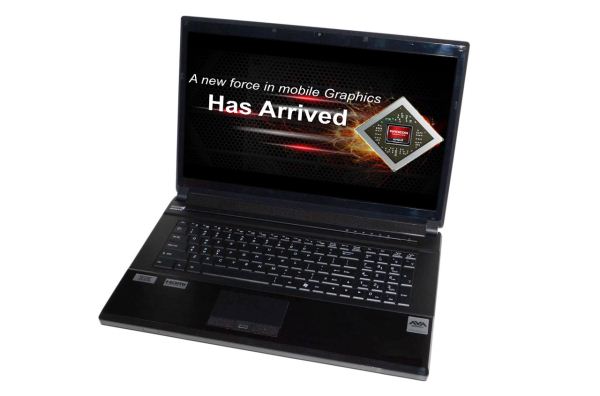




 Quote
Quote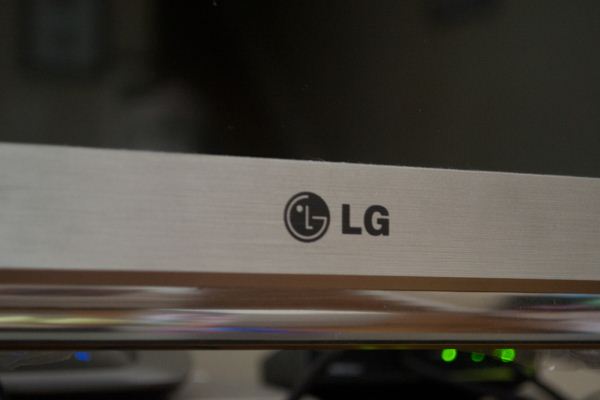
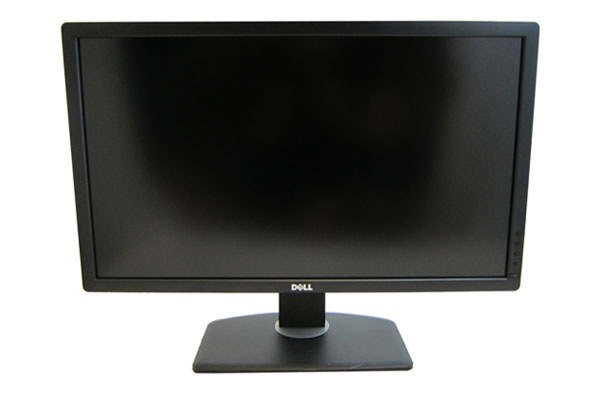


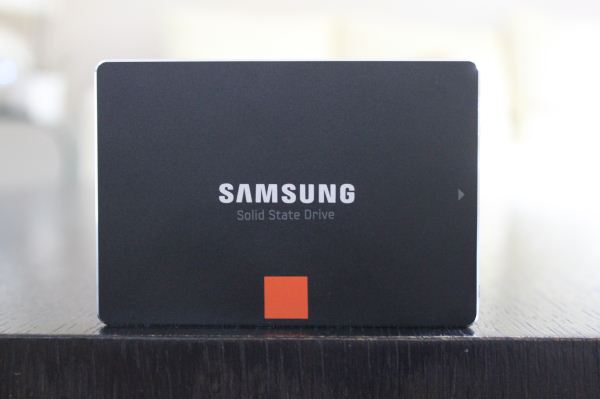
















Bookmarks